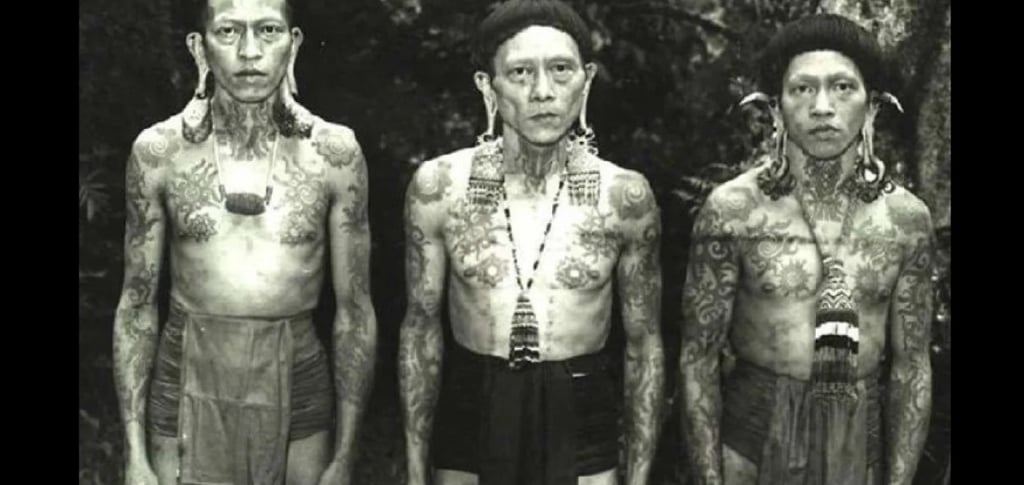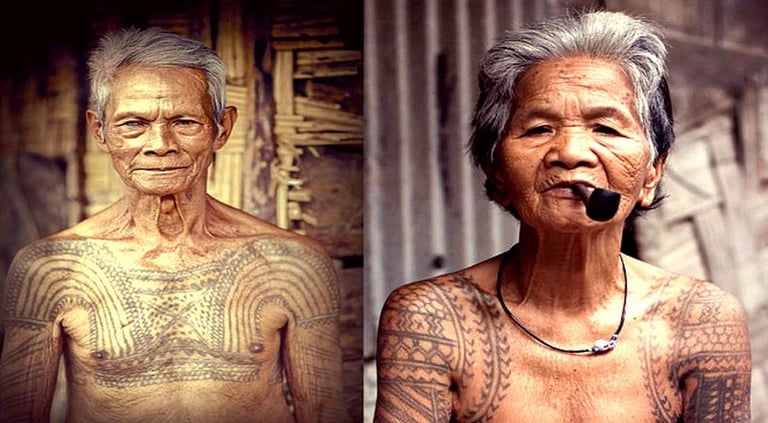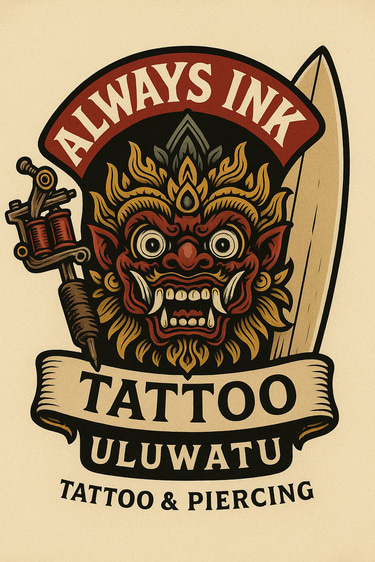The Tattoos of the Dayak Tribe: A Cultural Heritage from Borneo
Jacob
3/3/20252 min read


Tattoos in the Dayak culture of Borneo are more than just body art—they hold deep spiritual, social, and historical significance. Passed down through generations, these tattoos symbolize identity, achievement, and a connection to the spiritual world.
1. The Meaning and Symbolism of Dayak Tattoos
For the Dayak people, tattoos serve various important roles:
A marker of social status → Individuals with multiple tattoos are often respected as warriors, hunters, or those who have completed significant rites of passage.
A form of spiritual protection → Tattoos are believed to possess magical properties that ward off evil spirits and disease.
A sign of life achievements → Each tattoo tells a story, such as a warrior who has proven himself in battle or a traveler who has ventured far from home.
2. Types and Placement of Dayak Tattoos
Dayak tattoos are distinguished by their unique patterns, often inspired by nature and mythological creatures. Some of the most well-known tattoos include:
a. Bunga Terong (Shoulder Tattoos)
The Bunga Terong (eggplant flower) is one of the most iconic Dayak tattoos. It is typically placed on the shoulders and symbolizes courage and readiness for adulthood. This tattoo is often given to young men who have completed a spiritual journey or warrior initiation.
b. Tattoos on Hands and Arms
These tattoos indicate that the wearer has achieved something significant, such as a successful hunt or an important contribution to the community.
c. Tattoos on Thighs and Calves
Reserved for warriors or tribal leaders, tattoos in these areas signify bravery and high status. The more tattoos a person has, the more respected they are within the community.
d. Facial Tattoos
Facial tattoos are the highest mark of honor, usually reserved for elders or spiritual leaders who have demonstrated exceptional wisdom and leadership.


3. The Traditional Tattooing Process
Traditional Dayak tattooing is performed using a tapping technique. The tools used include:
Needles made from thorns or sharpened animal bones
Natural ink derived from soot or tree sap
The process is painful and time-consuming. Tattoos are often applied during rituals accompanied by prayers and chants, reinforcing their spiritual significance.
4. The Role of Tattoos in the Afterlife
The Dayak believe that tattoos play a crucial role in the afterlife. According to their beliefs, tattooed individuals have an easier journey to the spirit world. Their tattoos act as guiding lights, helping their souls navigate through the darkness to reach their final resting place.
5. The Threats to Dayak Tattoo Traditions
Unfortunately, the tradition of tattooing among the Dayak people has been declining due to several factors:
Negative stigma → Tattoos are often associated with criminality or pagan beliefs.
Modernization and religious influences → Many younger generations are choosing not to continue the practice.
Western influences → The adoption of global trends has overshadowed traditional customs.
However, in recent years, there has been a revival of Dayak tattoo art. Modern tattoo artists are incorporating traditional Dayak motifs into contemporary designs, preserving this unique cultural heritage.
Conclusion
Dayak tattoos are more than just body decorations; they are symbols of identity, spirituality, and history. Despite the challenges posed by modernization, efforts to preserve this tradition continue, ensuring that future generations recognize and appreciate their cultural roots.
